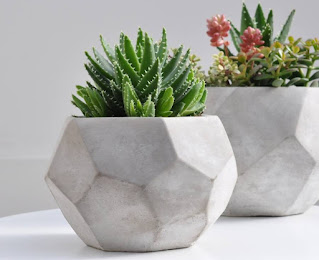This article provides a great analysis of the different ways concrete is used and where they work best. Most of the projects below use fine sand as aggregate to obtain a smoother surface. The fast setting concrete mix already has the ideal balance of concrete and fine sand required to make a concrete planter.
Thin concrete (topping or repairing concrete): Standard concrete contains gravel and these larger stones will affect the overall look of your DIY pots. Get a good concrete sealant and a brush that you can use to seal the drill. Use a concrete drill to drill a hole in the bottom of the drill for drainage.
Fill all pots with concrete and tap them to remove bubbles. Spread them out by shaking off the concrete or cutting it off where it is too difficult to remove.
I have not used a leach process for any of them and only one of them is sealed. In such concrete pots, the risk of watering the plants is less due to their porosity. However, plants, like most succulents, often thrive in higher pH soil, so there is no need to leach lime into a planter or concrete pot. It is safe to grow vegetables in pots, planters and concrete containers.
Concrete pots are good for plants because they are tough, porous, and provide insulation. Succulents prefer to grow in alkaline soil, so concrete pots are suitable for them. Concrete has a high lime content which can adversely affect some plants. However, if you want to make a DIY planter out of concrete or concrete and your plants prefer acidic soil, stick with it because it's easy to fix.
While a cast stone planter uses enough water to hold the material together, the wet concreting process actually uses enough water to create a somewhat liquid slurry mixture.
The concrete is poured into a large mold, then the smaller mold is placed on top and "squeezed" down. The concrete is porous and helps control over-watering and root rot development. While concrete is a practical choice for large plants that may require upwind ballast due to its weight, this weight also makes the drill difficult to move.
Therefore, if you are planning on using concrete containers for anything, make sure you know where you want to and do not plan to move them. Choosing the best concrete sealer for your planters will depend on your end goal.
You will need to find an outer container and then insert a smaller object inward to create a shape for each flower pot. This DIY concrete flowerpot requires you to mix concrete in a bucket with a shovel, pour the mixture into an outer container, and then press a smaller container into the concrete to make a flowerpot shape.

No comments:
Post a Comment